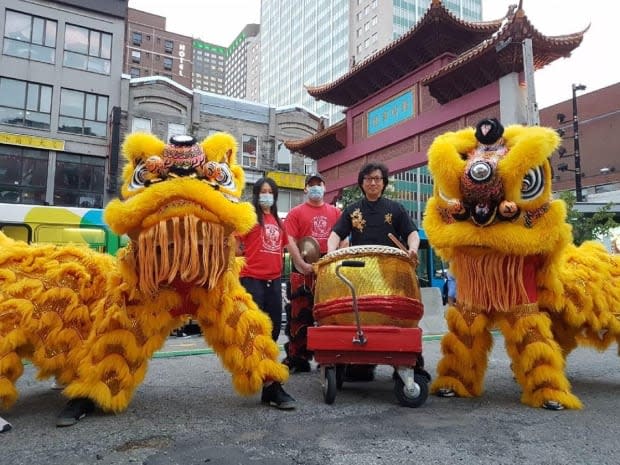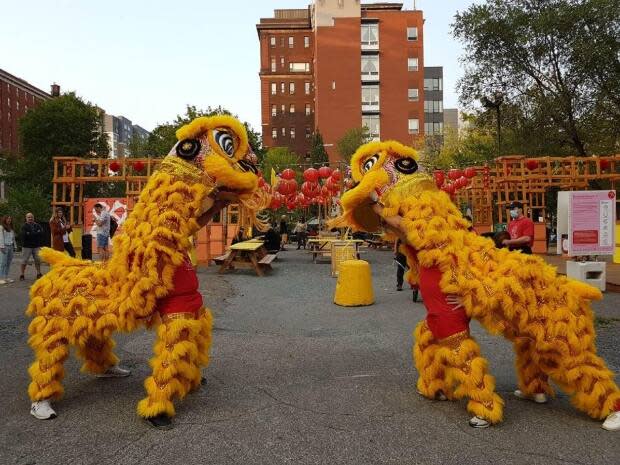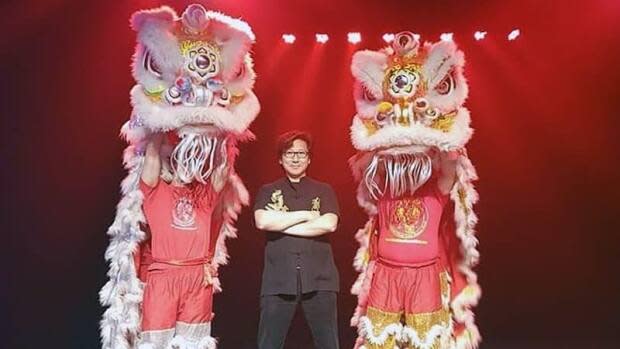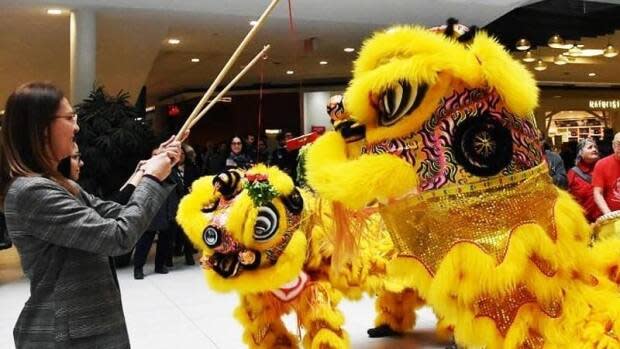Chinese lion dancers set to bring back joy

It's time to wake the lion.
Jimmy Chan, founder of the Montreal Chan Lion Dance Club, is bringing traditional Chinese lion dancing back to Montreal. Until recently, performances have been on hold due to the pandemic.
Chan said Montrealers can expect to see his lions back in Chinatown near the end of August, pending city approval.
Chinese lion dancing is a carefully choreographed affair that combines a puppy-like joy, as Chan describes it, with elaborate costumes and a rhythmic accompaniment of drums and gongs.
The lions are brought to life by two performers wearing a traditional costume — one at the head and one at the tail.
Synchronized, they control the lion's movements: wagging its tail, moving its eyes, and perking its ears. They leap around to mimic the pounce of a real-life animal.

The art dates back 5,000 years, explained Chan in an interview with Sabrina Marandola on CBC's Let's Go.
LISTEN | Jimmy Chan, founder of the Chan Lion Dance Club, talks about the history of the lion dance.
The origins of the lion dance
There are many stories about how the lion was created, Chan says.
As one legend has it, an emperor dreamed of a creature that came down from heaven and danced excitedly around him.
At that time, his villagers and his queen were unhappy. So when the emperor awoke, he hired the most talented artist in China to create the creature from his dream. Then, he hired a powerful priest to bring it to life.

The animal was friendly and brought joy to his queen and to his villagers. The creature would later be called a lion.
As Chan explains it, lions symbolize the removal of evil and to this day, the lion dance represents luck, health, and prosperity.
"It's very important for the Chinese New Year," said Chan. "Because the lion traditionally could conquer and send away bad luck, and bring in good luck, good energy, and good health."
Preparation behind every performance
Lion dance performers train extensively. It requires a high degree of fitness — and finesse — to accurately reproduce the movements of the actual beast.
"You cannot miss a move, you cannot miss a step," said Chan.
The costumes are intricate in design. They are handmade in China with silk, bamboo, and paper. Every three years, Chan orders new designs.
"It's a really beautiful and delicate animal," said Chan.

Chan was the first to form a lion dance club in Montreal, 28 years ago. He has also worked for the Cirque du Soleil as a consultant to help performers realistically reproduce the walk of an elephant.
Now, after a year of reduced contact and few performances, Chan is slowly getting back into action with his club.
In recent weeks, his group has performed at children's summer camps and two other big events. Chan said that he's already being asked to perform at schools in the fall.
"It's a fantastic feeling to not just represent the culture," said Chan. "But also to represent the human spirit behind the lion."

